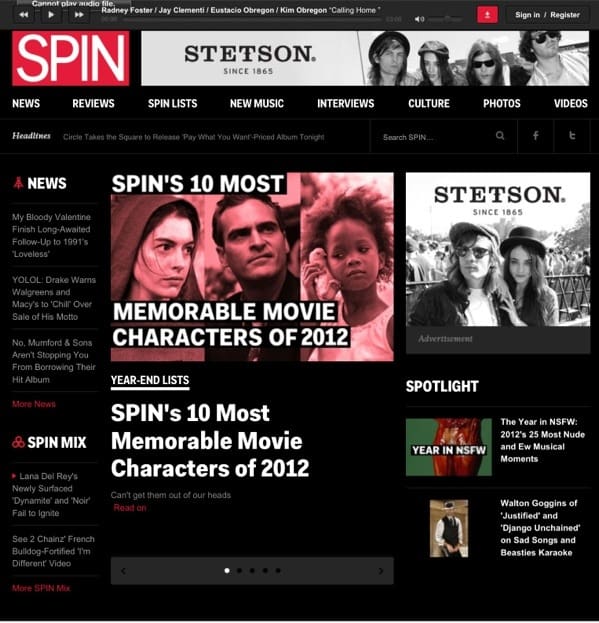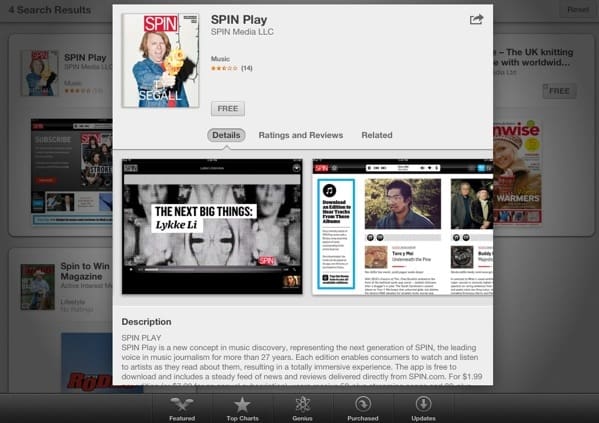Spin magazine is killing its print edition-tell me how paywalls would help this situation?
I keep hearing over and over again that the demise of Murdoch’s The Daily means that digital magazines don’t work, the real solution to the revenue problems is to “fix the original sin” and put all content behind a paywall.
The thinking seems to be that since the New York Times has said that circulation revenues are equal to ad revenues, that must mean that paywalls are the long-awaited saviour for the news business.


Comes now the case of Spin magazine, the venerable Rolling Stone also-ran. Can’t spin these numbers as anything other than a full blown collapse of the underlying ad market:
Over the course of the last decade, ad pages gradually declined from 661 in 2003 to 378 in 2011, a 43% drop, according to the Publishers Information Bureau. More recently, ad pages plunged another 40% from 287 in the first nine months of 2011 to 171 in the first nine months of 2012.
On the circulation front, in the six months ending December 2011 (the most recent period for which data is available) Spin had a total circulation of nearly 460,000 down 15% from 540,901 in the same period of 2005, according to the Alliance of Audited Media, formerly the Audit Bureau of Circulations.
OK, so take a second and mull over those numbers. When your ad revenues diminish by 75% while your circulation is only down 15%, what does that really mean? Does it mean that the audience has abandoned your product?
Or does it mean that advertisers have abandoned your product?
Of course, it means the latter. The young, hip audience that buys music (and all the related lifestyle accoutrements you see in music mags, such as t-shirts, DeVry University classes on how to be a music producer, black light posters & urine-cleansing supplements), is now getting their music online, not from the no-longer-existent music stores.
Why buy an ad in a print product that doesn’t offer a quick and easy way for the now-engaged audience to seamlessly buy what you’re selling? It’s more effective than print, and (due to continuing wrongheaded ad sales policies) cheaper too.
The challenge here, once you make the shift to all-digital, is going to be offering some kind of as product or experience that differentiates your music mag from all the music blogs out there that have much lower cost overheads.
I’ve always said that the places to watch for innovation are music and video games. Keep an eye on this space. If there are going to be innovations, they are likely to show up here first.
